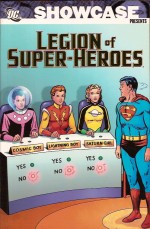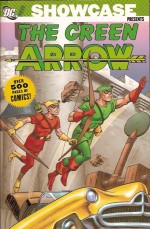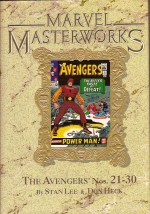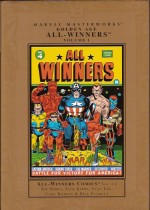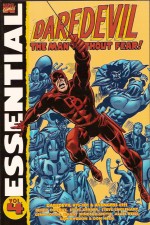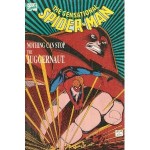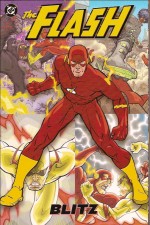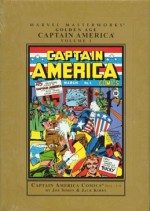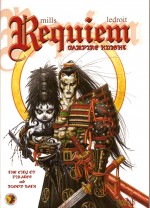
By Pat Mills & Ledroit (Panini Books UK)
ISBN: 978-1-84653-496-6
As is so often the case Europe is the last and most beneficial arena for the arts and untrammelled creativity, and none more so than comics and sequential narrative. Mercifully the Continent cherishes the best of the world’s past as well as nurturing the fresh and new, without too much concern for historical bugbears of political correctness, transient social impropriety and contemporary censoriousness – which is why so many established English language strip creators produce their best work there.
Perhaps it’s simply that they revere not revile the popular arts as much as all those hoity-toity classical ones….
Requiem Vampire Knight is an impressive example of self-publishing done right, and happily with commensurate rewards. For years writer Pat Mills wanted to break into the European market and in 2000 he did so by setting up Nickel Editions with publisher Jacques Collin (whose Zenda Editions produced some of the nicest looking albums of the 1980s) and artist Olivier Ledroit who illustrated the first four books of the incredibly popular Chroniques de la Lune Noire (Black Moon Chronicles) for Zenda before the series transferred to Dargaud. Mills and Ledroit were already old comrades having previously worked on the impressive Sha.
Mills is well known to readers of this blog (see for example Marshal Law: Fear and Loathing and his incontestable masterpiece Charley’s War) but perhaps Ledroit is not so familiar. After studying Applied Arts he began his career as an illustrator for games magazines and broke into Bandes Dessinee (that’s comics to us Anglaise) in 1989 with the aforementioned Black Moon Chronicles, written by François Marcela Froideval.
Specialising in fantasy art Ledroit drew Thomas Mosdi’s Xoco (1994) before teaming with Pat Mills on the acerbic, futurist thriller Sha, set in an ultra-religious fascistic USA (1996-1999 and thematically in the real world any minute now).
His lush painterly style was adapted to fairytales in 2003 with L’Univers Féerique d’Olivier Ledroit, and he is credited as one of the founding fathers of the darkly baroque fantasy sub-genre BD Gothique.
From a financially shaky start Requiem Vampire Knight quickly proved that quality will always find an audience and Nickel swiftly expanded whilst continuing the excessively adult adventures of deceased warrior Heinrich Augsburg. The saga is released as annual albums in France and has been serialized in Germany as Requiem Der Vampirritter and in America’s Heavy Metal (beginning in Volume 27 #1, March 2003).
Two years ago Panini UK brought this evocative series to Britain in superb oversized, A4 format, double-editions presenting two albums per volume and the fifth compendium is here just in time to assault the Christmas market. The City of Pirates and Blood Bath continues the hell-bent saga of a conflicted Nazi doomed to unlive his life as a vampire warrior in a macabre inverse world of evil, which began in Requiem Vampire Knight Tome 1: Resurrection and Danse Macabre.
Augsburg was a German officer killed on the Eastern Front in 1944. As he died all he could think of was his guilt over a doomed affair with the Jewess Rebecca whom he chose not to save when the Gestapo came for her…
Resurrection is a brooding, blood-drenched world of eternal strife and warfare: a grim, fantastic, necromantic mirror of Earth with the seas and land-masses reversed, where time runs backwards and denizens grow younger day by day – if they’re not “expired†first by any of a billion-and-one friends, allies, total strangers or archest enemies.
The charnel realm is populated by all the worst sinners of Earth reincarnated as monsters of myth in a damned domain where the dead mortals are reborn in ranks and hierarchies determined by their sins on Earth. Their only purpose is to expiate or exacerbate the sins of their former lives…
Heinrich (now called Requiem) is a Vampire: one of the top predators in this bloody post-existence reality, pinnacle of Hell’s pyramid of puissance and a full knight at the court of Dracula.
Requiem and his blood-draining kin are trapped in a spiral of bloodletting, debauchery and intrigue and his position is far from secure. Not only has he earned the enmity of the treacherous faction of elite Nosferatu led by Lady Claudia Demona, Lord Mortis and Baron Samedi, but it appears that he may be a returned soul…
Long before Augsberg died on a frozen battlefield, killed by a Russian he was trying to rape, the Templar Heinrich Barbarossa had committed such atrocities in the name of Christianity that he was guaranteed a place in Dracula’s inner circle when he inevitably reached Resurrection.
However the remade Barbarossa/Vampire Knight Thurim committed such an unpardonable crime that he and it were excised from the court and Resurrection itself.
But in this volume, Requiem, plagued by memories of a doomed affair with a proscribed Jewess named Rebecca, is in the midst of a cataclysmic all-out war involving every ghastly inhabitant of the blazing inferno they’re pent within…
Amidst the factions of Vampires, Gods, arcane Archaeologists, Lamias, Werewolves, Ghouls and so many others, Rebecca too has reconstituted in Resurrection. Her only chance of eternal rest is to expire the one responsible for her being there…
I’d strongly advise picking up the previous chronicles before this one if back-story means much too you, since Mills & Ledroit don’t waste any time or space on catching up, but storm straight into the unfolding epic with a staggering climax to the all-encompassing war between the unruly desperadoes of Aerophagia, The City of Pirates and Dark Harbour, capital and stronghold of the Vampire Court of Draconia.
Along the breakneck way we discover that the second most important man in post-War America was the earthly identity and hideous soul reconstituted as the deadly Buccaneer Queen Lady Mitra, who has been trading with the living world of Earth for holy weaponry capable of destroying Nosferatu, whilst the conflicted and irresolute warrior Requiem makes an unlikely conquest who will again divert him from his quest for Rebecca.
Also drawing attention is the samurai vampire Dragon, bound to the pirate cause by his ancient – and therefore baby-like – sensei Tengu, but whose own unholy dream is to find and expire the man who caused the atomic death of Hiroshima…
As the conflict escalates to a bloody, burning climax all of Resurrection is embroiled in the constant carnage and even the most exalted monsters begin to falter and finally “dieâ€â€¦
With everything in uproar Dracula begins his final moves in the bloody game as Requiem, torn between desire, duty and despair faces off against his martial and spiritual counterpart Dragon…
Blood Bath combines the incredible end of the war with Mills’ signature blackly mordant bad-taste humour, as a peerless duel between the Vampire Knights devolves into murderous slapstick as demon-infant Tengu battles his own master (Requiem’s teacher and sponsor Cryptos – an even younger baby-thing) whilst a euphoric Lady Mitra invades the Vampire sanctum intent of sealing her victory in the ichor of undead elite Lady Zarkov and Queen Bathory.
Tragically for her, Mitra succeeds and learns a horrifying ultimate truth…
Meanwhile, in a far corner of the realm the race of dragons who once were England’s greatest champions are moving against their once-ally Draconia…
Unrelentingly hard and heavy, this spectacularly decadent, opulent, Machiavellian dalliance with the wildest dreams – and grim, black wit – of a new De Sade, this book ends on yet another cliffhanger as the Vampire Lord prepares to make his endgame move, but that a blood-drenched spectacle for a later day…
For any fan of Mills’ work there nothing truly new here to be shocked by, but the liberating license to explore his favourite themes guided only by his own conscience and creative integrity has resulted in a complex, intensely compelling epic of revenge and regret on the most uncompromising of worlds where there is literally no justice and no good deed ever goes unpunished.
Blending cosmic warfare with sardonic deadpan humour, wrapped in the ludicrously OTT trappings of sadomasochistic fetishism, this is a truly epic saga of Gothic hopelessness perfect for the post-punk, post-revisionary, lavishly anti-reductionist fantasy fan.
But it’s probably best if you don’t show your gran or the vicar and certainly not your – or anybody else’s – kids. They’ve probably got their own copies anyway…
Ledroit’s illustration is utterly astonishing. In places delightfully reminiscent of Druillet’s startlingly visual and deceptively vast panel-scapes from such lost masterpieces as Yragael: Urm as well the paradoxically nihilistic energy of such decadent Michael Moorcock civilisations as Granbretan or Melniboné, he has created a truly unique scenario with his vibrant palette. Never has the horrific outer darkness been so colourfully captured and the sheer scope of the numerous ambulatory nightmares and eye-popping battles is utterly mind-boggling.
A darkly grim and mordantly cynical secularist dream, this is a fabulously realized adult fantasy of blood and thunder both beguiling and addictive.
Dark, dark magic!
© 2009, 2010, 2011 Nickel/Mills/Ledroit.  All rights Reserved.

